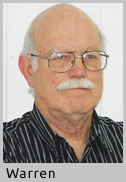Hotel/Motel/Resort Laundry: James Brewster, The Resort at Glade Springs, Daniels, W.Va.
My main focus is to keep a spreadsheet and calculate the percentage of rewash per linen type, sheeting and terry. In hotel laundries, the main objective is the quality of product given to a guest. The rewash rate should be between 4% and 7%. Any higher and you’re not using enough chemical. If it’s too low, that means you’re using too much chemical.
You should definitely get to know your chemical vendor and talk about various programs and dosages. So, become your representative’s best friend, because he or she can have a great impact on your operation.
When looking at stains vs. soils, a stain is a spot that has set in the linen and usually will not come out. In my experience, stains will fade over numerous washings, but the linen usually ends up being discarded. Learn how the linen is used to try and slow or stop this problem.
Soils are just that, a soiled spot that can be pre-treated and washed in the proper formula. Once again, use your chemical vendor’s experience and knowledge. Also, call around to other laundries and ask if they are having the same problem. The more minds you have working on the issue, the more quickly it can be rectified.
Consulting Services: Sam Garofalo, Technical Consulting Associates, Charlotte, N.C.

An acceptable percentage of rewash for healthcare or hospitality bed linens is 3%. Floor and machine drops can add as much as another 2% to your workday. Your first sign of trouble is rewash exceeding 6% on your light soil. If that rewash gets thrown back in on the same formula, you will have 6% again tomorrow! Can you afford to add an exponential cost increase to your production time, chemicals and utilities almost every day? Of course you can’t!
What do you do? Involve several people in your plant to provide oversight. Get your chemical technician involved in developing a rewash program. Ask him to make it part of his regular service visit to do a “Rewash/Stain Audit.”
Place two buckets that can be accessible at each inspection or feeding station—one should be for “Rewash/Stain” and one for “Drops, Rips and Miscellaneous.” Train your inspectors and feeders to recognize the differences in rewash/stain and rags, rips and drops. At the end of each day, collect, weigh and note all items in the Rewash/Stain buckets.
During your chemical tech’s visits, he should examine the goods in the Rewash/Stain buckets to determine if the offending stains should have come out in the first wash. He should also review the rewash data collected to make sure that he is within acceptable parameters. Run the goods processed in the rewash/stain formula back through the inspection process again, collecting and holding all of the rejected items for the chemical technician to examine.
Some people choose to discard the remainder at this point, but I usually recommend a final stain formula that will remove old blood, rust, and oxidizable stains.
Every effort should be made to make sure that the rejected linen does not re-enter the system. It will take some time to get everybody on board and monitoring to make sure there is follow-through on the new procedures, but it will be well worth the effort.
Commercial Laundry: Richard Warren, Linen King, Conway, Ark.

If the goods come through the wash process and are not “clear,” that item is probably stained. Unfortunately, the end-users are not the purchasers of the linen goods, and the goods are abused by the users. That may be polishing shoes, or wiping up spills, or as containment of overflows or leaks in plumbing.
Laundries are at a disadvantage, as usually we are not able to identify what has caused the stain. This keeps us from doing little other than guessing.
Experience tells us that certain medicines result in stains of certain types, colors or categories. Tape is also a big offender, as are the “stick-on” electrodes that are stuck on a sheet, once removed from the patient.
Some of those blemishes that are now stains could have been minimized or negated completely if the cause was identified prior to processing. But with a large laundry and large customers, that’s impractical.
We all strive for a process that prevents the same item from being repeatedly processed, e.g. the merry-go-round. Unfortunately, when you are dealing with a high volume of goods, workers must decide what to do with it quickly, and cannot spend much time studying it. Usually, it will be placed in the rewash categorized as a soil, hence the aforementioned merry-go-round.
Ideally, we process it one time and get paid for it. In reality, we may process it several times and only get paid once.
Uniforms/Workwear Manufacturing: Scott Delin, Superior Uniform Group, Seminole, Fla.

Two enemies of healthcare laundries that might reduce product life and have a major impact on product quality are stains and “soiled marks,” a colored patch or dirty mark that is difficult to remove.
First, we should always try to pre-wash merchandise before it is sent to our customers and put into service, to remove any chemical finish left on the fabric during manufacturing. If pre-washing is done and the product gets soiled or dirty, the marks are more likely to come out during laundering.
During processing, it is up to the laundry employees handling the goods to visually inspect and set aside anything that does not meet standards. These items are usually discarded into a rewash bin that will be sent back through the process for a second time. Should the “soil marks or stains” still show after being rewashed, the items will usually be stain-treated using a defined chemical treatment bath by soil classification.
Soil marks usually have a tendency to disappear during the rewash process while a true stain remains and is still visible, although maybe a little lighter in shade.
It’s important that laundries consider these tips when processing:
Make sure water temperatures are set properly (not too low or too high) to maximize the wash chemicals being used
Make sure washers are not overloaded
Periodically test water used for processing to make sure excessive impurities do not exist
Take measures to ensure soil is classified properly prior to processing
Make sure the chemical company develops proper wash chemicals and formulas based on product type and/or soil classification to maximize cleaning
Check to see that water levels are set properly (not too low)
Ensure that processing equipment is utilizing proper mechanical action
Examine how plant staff, delivery team and distribution teams handle product internally
Consider how carts are loaded with clean goods prior to loading on trucks for delivery, and how carts are loaded with soiled linen before being transported back to the laundry for processing
Package product properly before distribution
Study how product is distributed and handled by end-users
Educate customers on how to store soiled products, and consider furnishing them with bins for soiled-linen collection
Set up meetings with specific customers from whom you receive “stained” product regularly and show them examples in an effort to identify potential abuse. Continued education and communication goes a long way.
Will implementation of these tips solve all staining issues? No, but it sure will help reduce the percentage of stain rewash found in laundry plants today. That should translate to a “cleaner” bottom line.
Apparel and textile manufacturers are developing products using new fabric technology said to have more effective stain- and soil-release properties. Equipment manufacturers are developing high-tech machinery that yields better mechanical action, and chemical suppliers are developing new stronger, fast-acting chemicals and wash formulas that help eliminate soil and remove stains during processing.
By working closely with manufacturing/supplier partners, linen and product life can be increased while the staining problem seems to go away.
Equipment Manufacturing: Gary Ostrum, G.A. Braun, Syracuse, N.Y.
Looking at the first question, I’m taking a two-prong approach. First, every laundry operation should regularly (quarterly) test their wash formulas. This is done by utilizing a test piece service by one of the independent organizations providing such in our industry. The results should act as a benchmark and be used to ensure that the wash formulas in place are processing one’s linens at the quality level required while resulting in the lowest tensile loss possible.
For whatever reason, these independent testing services are being utilized less and less in our industry. Yet if one makes a change in wash processing and rewash goes from 3% to 4%, the increase is actually 25%. So while chemical delivery systems now have proof of flow, linens have stain-release functions, and equipment manufacturers claim all sorts of improvements in the wash process, in the end one is best served when they go back to the base wash pie, the science behind it, and test to make sure they are getting the results needed.
Now, having worked to minimize rewash/reclaim, we get to the second prong: having an effective rewash/reclaim formula in place to:
Get rewash/reclaim linen back to a usable state and into one’s working inventory
Get rid of linen that cannot be returned to a usable state, so it does not corrupt production
How important is this? Let’s go back to my opening. At $5 a pound to purchase, for every 100 pounds of linen that cannot be used due to staining, $500 of new linen needs to be purchased to maintain said inventory.
Our industry has had long-standing and effective rewash/reclaim processes but all too often these seem to have been put aside. I walk into many plants where the program is to send the goods back to process normally again, or rewash/reclaim just piles up until it is sold at rag-out pricing.
The fix is simple and effective: every plant should have a rewash/reclaim formula, and all such items should be sent through this formula.
These reclaimed items should be put back into working inventory, and any items that are still stained then either ragged out or used for another purpose (dyed to a darker color, given to housekeeping, etc.). The main thing is they have to be taken out of the production loop.
One’s rewash/reclaim process should be 60 to 70% effective, and all major chemical manufacturers have effective rewash/reclaim formulas.
Also, when using higher amounts of alkalies, oxidizing agents, and metal-removing chemicals, check with your equipment vendor to make sure wash equipment will not be damaged by such usage.
The second question is important, as one does not want to put goods through a reclaim formula if it is not necessary; it is a much harsher process.
Ensure that items without stains (bad folds, dropped on the floor, stepped on, etc.) are not sent back just to be rewashed and thus do not add to the reclaim volume.
In the old days, we used to be able to pull goods while still wet, as dryers and such were manually loaded. A stain that has yet to be dried is easier to remove. The need for more automation and higher production has reduced the ability to give linens a “once over” before they are dried so we have more goods going right to the reclaim process.
This adds to the need to ensure one follows the science of the wash pie, backed by regular third-party testing of the wash process.
Check back tomorrow for the conclusion!
Have a question or comment? E-mail our editor Matt Poe at [email protected].
